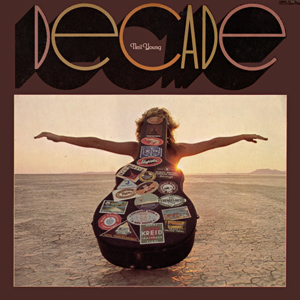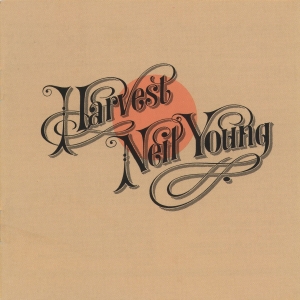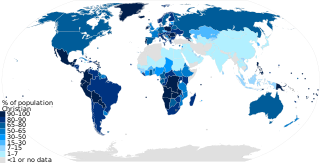
Decade is a compilation album by Canadian-American musician Neil Young, originally released in 1977 as a triple album and later issued on two compact discs. It contains 35 of Young's songs recorded between 1966 and 1976, among them five tracks that had been unreleased up to that point. It peaked at No. 43 on the Billboard Top Pop Albums chart, and was certified platinum by the RIAA in 1986.

Sheldon Allan Silverstein was an American writer, poet, cartoonist, songwriter, and playwright. Born and raised in Chicago, Illinois, Silverstein briefly attended university before being drafted into the United States Army. Though perhaps best known for his children's books, Silverstein did not limit his audience to children. During his rise to prominence in the 1950s, his illustrations were published in various newspapers and magazines, notably the adult-oriented Playboy. He also wrote a satirical, adult-oriented alphabet book, Uncle Shelby's ABZ Book, under the stylized name "Uncle Shelby", which he used as an occasional pen name.

Harvest is the fourth studio album by Canadian-American musician Neil Young, released on February 1, 1972, by Reprise Records, catalogue number MS 2032. It featured the London Symphony Orchestra on two tracks and vocals by noted guests David Crosby, Graham Nash, Linda Ronstadt, Stephen Stills, and James Taylor. It topped the Billboard 200 album chart for two weeks, and spawned two hit singles, "Old Man", which peaked at No. 31 on the US Billboard Hot 100, and "Heart of Gold", which reached No. 1. It was the best-selling album of 1972 in the United States. The album has since remained Neil Young's signature album as well as his best selling.

Tashi Namgyal was the ruling Chogyal (King) of Sikkim from 1914 to 1963. He was the son of Thutob Namgyal. He was the first independent king of Sikkim.
A bilateral investment treaty (BIT) is an agreement establishing the terms and conditions for private investment by nationals and companies of one state in another state. This type of investment is called foreign direct investment (FDI). BITs are established through trade pacts. A nineteenth-century forerunner of the BIT is the "friendship, commerce and navigation treaty" (FCN). This kind of treaty came in to prominence after World Wars when the developed countries wanted to guard their investments in developing countries against expropriation.
John Sack was an American literary journalist and war correspondent. He was the only journalist to cover each American war over half a century.
The Gravina Island Bridge, commonly referred to as the "Bridge to Nowhere", was a proposed bridge to replace the ferry that currently connects the town of Ketchikan, Alaska, United States, with Gravina Island, an island that contains the Ketchikan International Airport as well as 50 residents. The bridge was projected to cost $398 million. Members of the Alaskan congressional delegation, particularly Representative Don Young and Senator Ted Stevens, were the bridge's biggest advocates in Congress, and helped push for federal funding. The project encountered fierce opposition outside Alaska as a symbol of pork barrel spending and is labeled as one of the more prominent "bridges to nowhere". As a result, Congress removed the federal earmark for the bridge in 2005. Funding for the "Bridge to Nowhere" was continued as of March 2, 2011, in the passing of H.R. 662: Surface Transportation Extension Act of 2011 by the House of Representatives, and finally cancelled in 2015.

As of the year 2020, Christianity had approximately 2.4 billion adherents and is the largest-religion by population respectively. According to a PEW estimation in 2020, Christians made up to 2.4 billion of the worldwide population of about 7.7 billion people. It represents nearly one-third of the world's population and is the largest religion in the world, with the three largest groups of Christians being the Catholic Church, Protestantism, and the Eastern Orthodox Church. The largest Christian denomination is the Catholic Church, with 1.3 billion baptized members. The second largest Christian branch is either Protestantism, or the Eastern Orthodox Church.

The discography and filmography of Neil Young contains both albums and films produced by Young. Through his career most of Young's work has been recorded for and distributed by Reprise Records, a company owned by Warner Bros. Records since 1963 and now part of the Warner Music Group. The only exceptions are Young's five albums for Geffen Records in the 1980s, which were once distributed by Warner, but are now distributed by Universal Music Group.

Harold and the Purple Crayon is a 1955 children's book by Crockett Johnson. Published by Harper Collins Publishers, it is Johnson's most popular book, and has led to a series of other books, as well as many adaptations.
"You Ain't Goin' Nowhere" is a song written by American musician Bob Dylan in 1967 in Woodstock, New York, during the self-imposed exile from public appearances that followed his July 29, 1966 motorcycle accident. A recording of Dylan performing the song in September 1971 was released on the Bob Dylan's Greatest Hits Vol. II album in November of that year, marking the first official release of the song by its author. Earlier 1967 recordings of the song, performed by Dylan and the Band, were issued on the 1975 album The Basement Tapes and the 2014 album The Bootleg Series Vol. 11: The Basement Tapes Complete.
The University of Utah Press is the independent publishing branch of the University of Utah and is a division of the J. Willard Marriott Library. Founded in 1949 by A. Ray Olpin, it is also the oldest university press in Utah. The mission of the press is to "publish and disseminate scholarly books in selected fields, as well as other printed and recorded materials of significance to Utah, the region, the country, and the world."
It is estimated that in the Middle East, over 900,000 people profess Buddhism as their religion. Buddhist adherents make up just over 0.3% of the Middle East total population. Many of these Buddhists are workers who have migrated from Asia to the Middle East since the late 1990s, many of them come from countries that have large Buddhist populations, such as China, Vietnam, Thailand, Sri Lanka, and Nepal.
The Board of Governors of the International Atomic Energy Agency (IAEA) is one of the two policy making bodies of the IAEA, along with the annual General Conference of IAEA members.
The Hugo Awards are presented every year by the World Science Fiction Society for the best science fiction or fantasy works and achievements of the previous year. The award is named after Hugo Gernsback, the founder of the pioneering science fiction magazine Amazing Stories, and was once officially known as the Science Fiction Achievement Award. The award has been described as "a fine showcase for speculative fiction" and "the best known literary award for science fiction writing". In addition to the regular awards that have been given in most years that the awards have been active, several discontinued Hugo Awards have been presented throughout the years, only to be removed after a few years.

The Sovereign Military Order of Malta passport is a travel document issued to officials and diplomats of the Sovereign Military Order of Malta (SMOM). The order issues biometric passports which are fully ICAO9303 compliant.

Girl from Nowhere is a Thai mystery thriller anthology television series created by studio SOUR Bangkok and starring actress Chicha "Kitty" Amatayakul in the lead role.

Taking Punk To The Masses: From Nowhere To Nevermind And Beyond is a book by Jacob McMurray and editor Gary Groth. McMurray is the senior curator for the Museum of Pop Culture in Seattle. It was published in May 2011, in commencement with the similarly titled Nirvana exhibit at the Museum of Pop Culture. The book includes a foreword by Nirvana’s Krist Novoselic. The book includes stories mentioned from interviewees within the book, such as Mark Arm, Grant Hart, Calvin Johnson, Mark Mothersbaugh, Nirvana's Krist Novoselic, and nearly a hundred others who were a part of that musical scene.

Typhoon Songda, known in the Philippines as Typhoon Chedeng, was the strongest tropical cyclone worldwide in 2011, an exceptionally strong and catastrophic typhoon that lashed the eastern coast of the Philippines as a Category 5–equivalent super typhoon and affected the nearby Taiwan and Japan as a weakening tropical cyclone. The fourth tropical depression, second named storm and the first super typhoon of the 2011 Pacific typhoon season, Songda formed from a non-tropical low that was embedded from the Intertropical Convergence Zone on May 17. An area of low-pressure subsequently formed and became organized for the JTWC to issue a TCFA on the system and the JMA to issue advisories, before both agencies declared it a tropical storm, earning the name Songda. Under favorable conditions, Songda slowly intensified as it entered the Philippine Area of Responsibility, with the PAGASA naming it Chedeng on May 23. On the next day, the three agencies declared the system a typhoon before rapidly intensifying to a super typhoon over the Philippine Sea. As it entered an unfavorable environment for further strengthening, Songda slowly weakened as it passed near Taiwan, before becoming extratropical near Japan. The remnants of the system slowly moved to the northeast, before absorbing to another extratropical cyclone to the south of Alaska.










